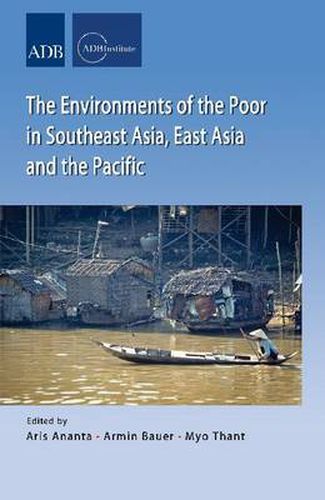Readings Newsletter
Become a Readings Member to make your shopping experience even easier.
Sign in or sign up for free!
You’re not far away from qualifying for FREE standard shipping within Australia
You’ve qualified for FREE standard shipping within Australia
The cart is loading…






This title is printed to order. This book may have been self-published. If so, we cannot guarantee the quality of the content. In the main most books will have gone through the editing process however some may not. We therefore suggest that you be aware of this before ordering this book. If in doubt check either the author or publisher’s details as we are unable to accept any returns unless they are faulty. Please contact us if you have any questions.
This book provides examples of possible triple-win solutions for simultaneously reducing poverty, raising the quality of the environment, and adapting to climate change. The book provides empirical evidence and observations from sixteen case studies in Southeast and East Asia, and from the Pacific. It argues that a spatial approach focussing on the environments in which the poor and vulnerable live, would trigger changes for development policies and implementation that better balance environmental and social concerns. In line with the post-2015 Millennium Development Goals (MDG) and Sustainable Development Goals (SDG) agenda, emphasizing integrated development approaches for the slum poor, the upland poor, the dryland poor, the coastal poor, and the flood-affected wetland poor, would also bring the environment and poverty agenda closer.
The book emerged from a cooperation of the Asian Development Bank (ADB) with the Institute of Southeast Asian Studies (ISEAS) in partnership with experts from research institutes and think-tanks in the Asian region.
$9.00 standard shipping within Australia
FREE standard shipping within Australia for orders over $100.00
Express & International shipping calculated at checkout
This title is printed to order. This book may have been self-published. If so, we cannot guarantee the quality of the content. In the main most books will have gone through the editing process however some may not. We therefore suggest that you be aware of this before ordering this book. If in doubt check either the author or publisher’s details as we are unable to accept any returns unless they are faulty. Please contact us if you have any questions.
This book provides examples of possible triple-win solutions for simultaneously reducing poverty, raising the quality of the environment, and adapting to climate change. The book provides empirical evidence and observations from sixteen case studies in Southeast and East Asia, and from the Pacific. It argues that a spatial approach focussing on the environments in which the poor and vulnerable live, would trigger changes for development policies and implementation that better balance environmental and social concerns. In line with the post-2015 Millennium Development Goals (MDG) and Sustainable Development Goals (SDG) agenda, emphasizing integrated development approaches for the slum poor, the upland poor, the dryland poor, the coastal poor, and the flood-affected wetland poor, would also bring the environment and poverty agenda closer.
The book emerged from a cooperation of the Asian Development Bank (ADB) with the Institute of Southeast Asian Studies (ISEAS) in partnership with experts from research institutes and think-tanks in the Asian region.